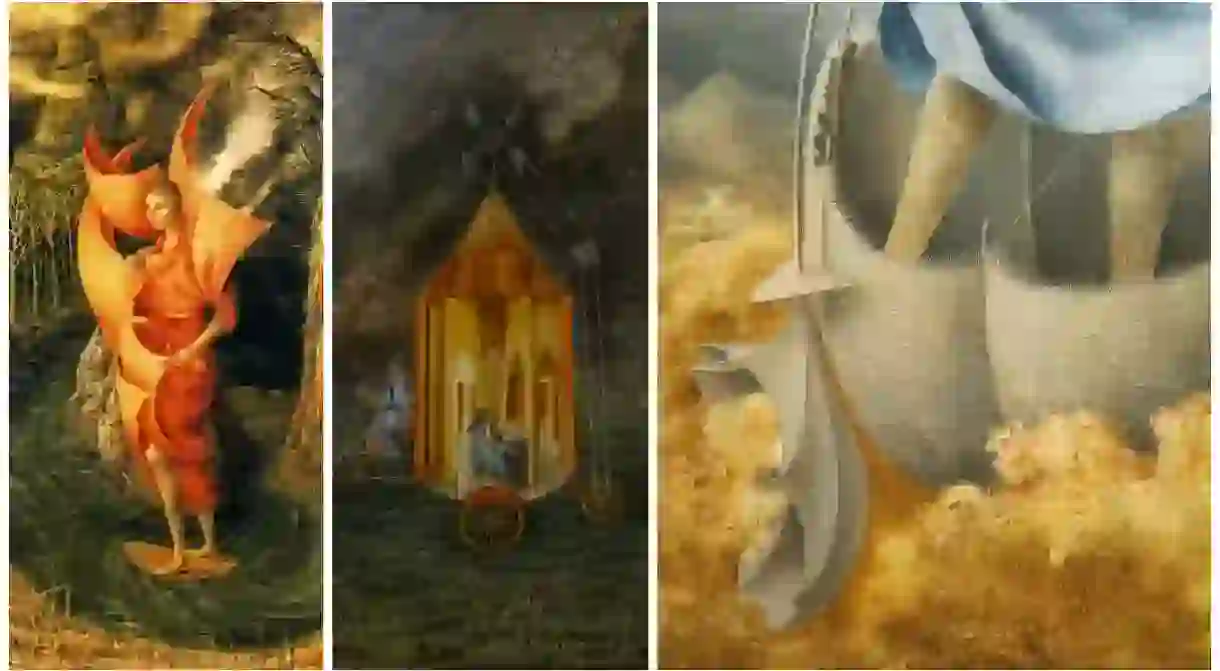An Introduction To Mexican Surrealists In 8 Artists

The 20th-century Surrealism movement was born from Dadaism, initially being popularised in Paris, before spreading to countries across the globe – including Mexico. This was considered a direct result of the wars raging through Europe at the time, as many intellectuals sought exile in Mexico, bringing with them the influence of Surrealism. Described as ‘above all a revolutionary movement’ by its leader André Breton, there are consequentially a number of Mexican (albeit not by birth) surrealists who aren’t the ever-popular Frida Kahlo (who actually rejected the term); here are just eight of them.
Leonora Carrington
Often described as Britain’s lost surrealist, Leonora Carrington moved to Mexico at an early age and spent most of her life in Mexico City. In fact, she is far more famous in Mexico than in the UK, and as a result, her artworks can be found in several of the city’s top museums; a notable example is her El mundo mágico de los Mayas mural, which is on display at the Museo Nacional de Antropología, Mexico City. As well as being a fantastic surrealist painter and sculptor, she was also a key figure in Mexico’s Women’s Liberation Movement during the 1970s.

Agustín Lazo Adalid
Often credited with introducing Surrealism to Mexico, you’ve probably never even heard the name Agustín Lazo Adalid. Both a playwright and an artist, he was always far more influenced by European Surrealism than the dominating force of Mexican Muralism that prevailed at the time. A so-called painter of the intelligentsia, rather than for the masses, Lazo Adalid took great influence from the work of Giorgio de Chirico and Max Ernst (who would go on to have a relationship with the aforementioned Leonora Carrington). Described as restrained, his work is predominantly dreamlike and fantastical.
http://instagram.com/p/BIqknbdAPjr/?tagged=agustinlazo&hl=en
Alice Rahon
Born Alice Phillipot in France, the poet and artist who was better known (but is now mostly forgotten) as Alice Rahon contributed heavily to the Surrealism scene in Mexico. Starting her trajectory into the world of Surrealism as a poet in her native France, she was to begin dabbling in painting only in Mexico. However, she was innovative as well as prolific during her artistic peak in the mid-20th century, incorporating techniques such as sgraffito into her work, or adding sand for texture.
http://instagram.com/p/7De6DqJD30/?tagged=alicerahon&hl=en
Bridget Bate Tichenor
Native, like many of the surrealists on this list, to a country other than Mexico – in this case it’s France – Bridget Bate Tichenor, also known simply as B.B.T., was a Mexican surrealist. Beginning in areas defined as more magical realism, Tichenor was heavily influenced by her multicultural life and heritage and was in fact first brought to Mexico by her cousin Edward James (of San Luis Potosí surrealist castle fame). By 1953, she had made the move to Mexico permanent and spent the rest of her life creating surrealist artwork.
http://instagram.com/p/BHNogP6jy_2/?tagged=bridgetbatetichenor&hl=en
Remedios Varo
Spanish by birth and Spanish-Mexican by nationality, the painter Remedios Varo emigrated with her husband to Mexico (like many of her profession and generation) due to the outbreak of World War II. Drawing influences widely from the spheres of literature and religion, Varo’s work is best described as fantastical and reminiscent of her close friend Leonora Carrington’s in many ways, too. Despite being well known in Mexico, she remains fairly obscure in other countries, and sadly passed away in 1963 of a heart attack.

Rosa Rolanda
Wife of Miguel Covarrubias, the famed Mexican artist, Rosa Rolanda was Californian by birth and Mexican by choice. After they moved to Mexico together, first having had an affair in New York, she developed her photography skills and later contributed to the surrealist photography scene. Her 1920s/30s series of photograms, which depict surrealist self-portraits, were perhaps her largest contribution to this artistic field and despite also being a painter (albeit not a surrealist one) she is still relatively unknown.
http://instagram.com/p/-AqfIHJ_S0/?tagged=rosarolanda&hl=en
Wolfgang Paalen
Officially classed as German-Austrian-Mexican, Wolfgang Paalen dabbled in many artistic disciplines, including sculpting, painting and philosophy, however he came into his own after joining the surrealist movement in 1935. At the request of Breton, Paalen was included in the International Surrealist Exhibition of 1936, at which he displayed some of his work, as well as the 1938 exhibition at the Palais des Beaux Arts in Paris. Despite breaking from the movement – and even founding a counter-surrealist art magazine during this period – he was to re-join again the in the 1950s.

Kati Horna
Another surrealist photographer comes in the form of the Hungarian-born Kati Horna, who became a naturalised Mexican after moving there aged 27. While most of her work was destroyed and lost during the Spanish Civil War, her legacy as a photojournalist and contributor to the Surrealism movement lives on; she worked with numerous magazines throughout Mexico and dipped her toe in the waters of architecture, too. Much of her work is now on display in Mexico and Spain.
http://instagram.com/p/31THbetYxa/?tagged=katihorna&hl=en













